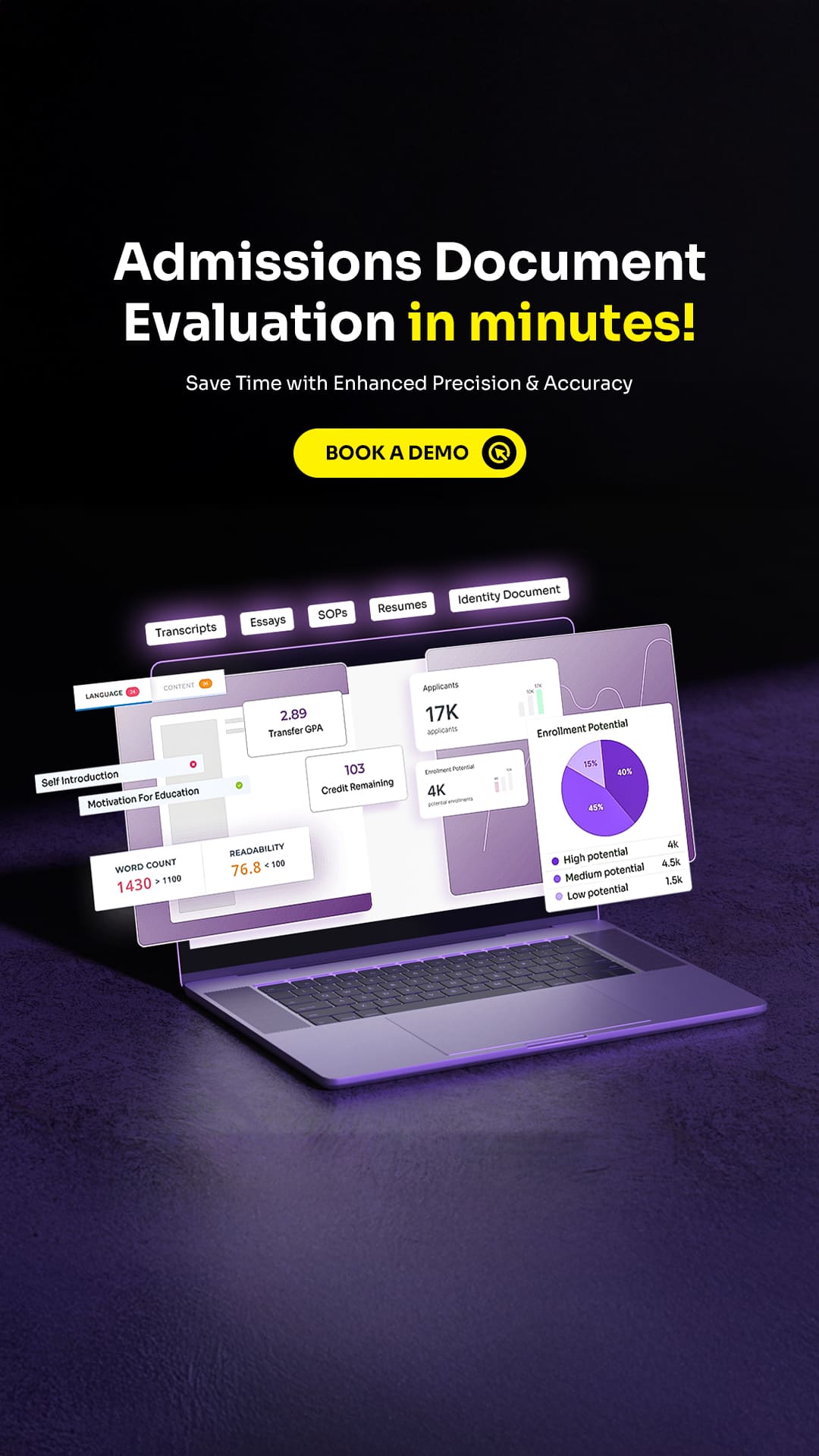The global chatbot market is set to grow at a 30.29% CAGR from 2024 to 2030, reaching over USD 31.38 billion. This highlights the growing role of chatbots in enhancing user experience and lead generation, particularly for educational institutions. To fully leverage their potential, institutions must understand how to select the right chatbot tailored to their specific needs and goals.
Table Of Contents
Conversational AI chatbots are more advanced than ever before, offering intuitive and interactive solutions that significantly enhance customer support and overall experience. By 2027, chatbots are expected to be central to 25% of all companies. They are capable of handling up to 70% of conversations, saving businesses an estimated 2.5 billion working hours. Additionally, 74% of customers prefer chatbots over human agents for resolving their queries, highlighting the growing reliance on AI-powered solutions for improving customer service.
Img-alt;how-consumers-interact-with-chatbots;According to these stats, consumers in 2021 are open to chatbot interactions and have had positive interactions. Only 12.8% of consumers report unpleasant interactions.
Why are chatbots on the rise?
This Userlike survey showcases how one of the most positive aspects of chatbots is the quick response time. Respondents also liked when they were directed to a person for further assistance.
AI chatbots have reduced operating costs for enterprises; hence, their demand is on the surge. Chatbot services have most of the market share compared to its other segments. According to Grand View Research, the global chatbot market size is expected to reach USD 27,297.2 million by 2030, registering a CAGR of 23.3% from 2023 to 2030.
Why do some website chatbots fail?
Chatbots provide personalized responses by automating 80% of predictable customer queries. It also engages users by asking them the right questions to convert them to leads.
Even though this may seem ideal, when the execution isn’t done right, it can cost institutions valuable time and money. Some other reasons chatbots fail are-
1. Setting unrealistic expectations
Chatbots have set features and integration done so they can answer any question by taking information from the database and helping the customer. The larger the database is, the better the answers will be.
But unfortunately, a chatbot cannot yet match the power of the brain and sometimes cannot help the customer, in turn confusing them more. This is why the integration and trail process is crucial for organizations because if the integration isn’t done right, there will be more roadblocks and cause more issues than solve them.
2. Lack of customer perspective
The main reason chatbots are created is to help the customers. If organizations don’t get customer feedback about the bot, there will be no improvement in customer service.
One mistake organizations make is focusing on technological results rather than user centrality. Chatbots must be built from a user-centric perspective. Even the UX design that is applied must be customer friendly.
3. Poor implementation
Implementation is a crucial aspect of a well-functioning chatbot. It takes a good deal of human intervention to perfect various aspects of a chatbot, such as configuration, training, updating systems, without losing out on valuable information, etc.
4. No transparency
A big mistake organizations make is not being transparent with their customers. Its essential customers know who they are talking to, so they trust the organizations and the person/bot they are conversing with. Hence, many chatbots have a name to seem friendlier to customers.
But no matter how good software is, sometimes humans prefer talking to humans. So not revealing that they are conversing with a chatbot may not bode well with customers.
The science behind choosing the right chatbot
As the demand for AI chatbots increases, so does the availability of features in the market. This can leave many institutions perplexed as to which features will best work for their business.
According to a Forrester Report, many market leaders cannot achieve personalized support even after implementing a chatbot solution. Only a small percentage can provide a highly customized automated experience.
For a successful implementation, institutions need to understand the science behind choosing the right chatbot and have a strategic approach.
Area of expertise
Having a conversational chatbot that has a dedicated area of expertise will be more cost effective as the solutions come pre-configured with responses. The chatbots area of expertise must include the institutions’ practices to ensure students stay on the site longer and convert from leads to enrolled students.
In addition to this, customers deeply value the ability to interact with humans. Therefore, it would be beneficial if an agent stays in the loop while the AI chatbot takes care of the customer’s needs but also jumps in when needed.
Institutions need to create an AI chatbot that can learn and develop just like a person. This will save agents time in training the bot and updating it with new information. A good example of this would be the EDMO chatbot- CASIE. This chatbot answers over 1000 questions in real-time and nurtures leads by promoting them in the right direction.
Complexity of dialogues
Institutions need to focus on how simple or complex the dialogues will be when designing response scenarios. For example, the dialogues can be simple where the bot gives a single answer or it can have a series of options as answers. For complex dialogues, the bot must have multiple branches where it can hold the conversation and provide solutions that can also convert leads to enrolled students.
A chatbot with such compound dialogues will have multiple dialogue trees that need a programming solution.
User interface
Arguably, one of the most important features of an AI chatbot is the user interface. There are different types of interfaces institutions can lean on depending on their needs. Some of which are-
- Voice channel- Here, the communication will take place over the telephone and further assistance can be sent via SMS or email.
- Voicebox- Through this, customers can find specific solutions to their problem when they use the voice box. A good example of this is Google or the Alexa.
- Avatar- An avatar is a simulation of a human that can express emotions in a conversation. Many institutions are opting for avatars as the primary UI, as these avatars look friendlier and generate better results.
- Pop-up windows- These are often present on most sites today. The conversation occurs once the user clicks on the icon present on the page.
These solutions have connectors that can be installed in a few clicks and adapted to any interface.
Clear language barriers
One problem that goes unnoticed by organizations is the loss of ROI due to language barriers. Even though chatbots provide 24/7 assistance, it is wasted if the bot cannot converse with the customer.
To be inclusive and attract more international students, institutions need to have more diversity in their technology. Multilingual self-service supports one of the many options that can be incorporated into the institution’s systems.
The right chatbot will not require constant human assistance and will be the perfect solution for lead conversions and be cost-effective.
Provide a solution
Users turn to chatbots for quick and efficient solutions to their queries. However, to maximize the potential of chatbots, institutions need to go beyond simple query resolution. By integrating intelligent chatbots that offer personalized recommendations, automate routine tasks, and guide users seamlessly through the platform, institutions can enhance user engagement and satisfaction.
These advanced chatbots not only streamline processes but also encourage deeper interaction, leading users to discover more features and explore the website. This, in turn, can help institutions increase revenue and drive better customer experiences.
The future of chatbots
In a world where a second delay in responding to customers can result in the loss of a lead, AI chatbots play a crucial role. Customer service in the digital era means having all hands on deck 24/7 to assist consumers. Chatbots can fulfill these criteria and more.
They can reply to 1000s of queries in real-time and nurture leads. This AI technology has transformed customer service and revolutionized the industry.
However, everything has its limitations, and AI chatbots are no exception. Even though these bots are equipped to converse and generate leads, the lack of emotional intelligence reduces the scope of deeper conversations.









No comments yet. Be the first to comment!
Leave a Comment